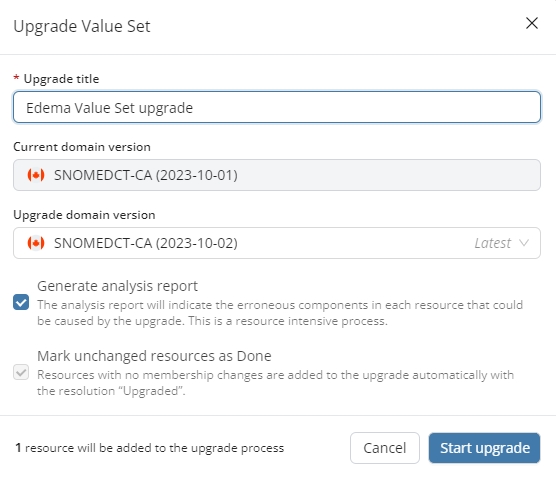Upgrade
The Upgrade feature provides a smooth flow to help users easily navigate through the process of migrating to a newer version of the Code System that their resource depends on.
Resources where a new domain version is available will be labeled with an ![]() tag as a visual indicator.
tag as a visual indicator.
Clicking on the ![]() tag will invoke the upgrade wizard.
tag will invoke the upgrade wizard.

Upgrade title
The title of the upgrade (mandatory) Note: By default, the field is populated with the selected resource's title
Current domain version
The version of the Code System domain that the resource currently depends on
Upgrade domain version
The version of the Code System domain that the resource will be upgraded to Note: By default, the latest available version is selected. It can be changed using the dropdown
Generate analysis report
If ticked, an upgrade analysis report will be generated that collects useful information about the content
Once the required fields are populated, users can proceed with starting the upgrade process by pressing the ![]() button.
button.
Resources with an ongoing upgrade process will be labeled with an ![]() tag.
tag.
The impact of the upgrade can be examined and addressed in the analysis report.
Once the necessary changes are made and the upgrade is considered complete, users can press the ![]() button to finalize the process.
button to finalize the process.
Upgrade flows
Running an upgrade is possible for single resources or Reference Set Collections.
In general, the two flows are the same in terms of the content validation types, but while the single resource upgrade only completes the process for the selected resource, the latter does that for the entirety of the Collection, i.e. all Reference Sets included in the selected Collection will undergo the upgrade process. This implies slight differences in the analysis as well, which are highlighted on the next page.
Was this helpful?
